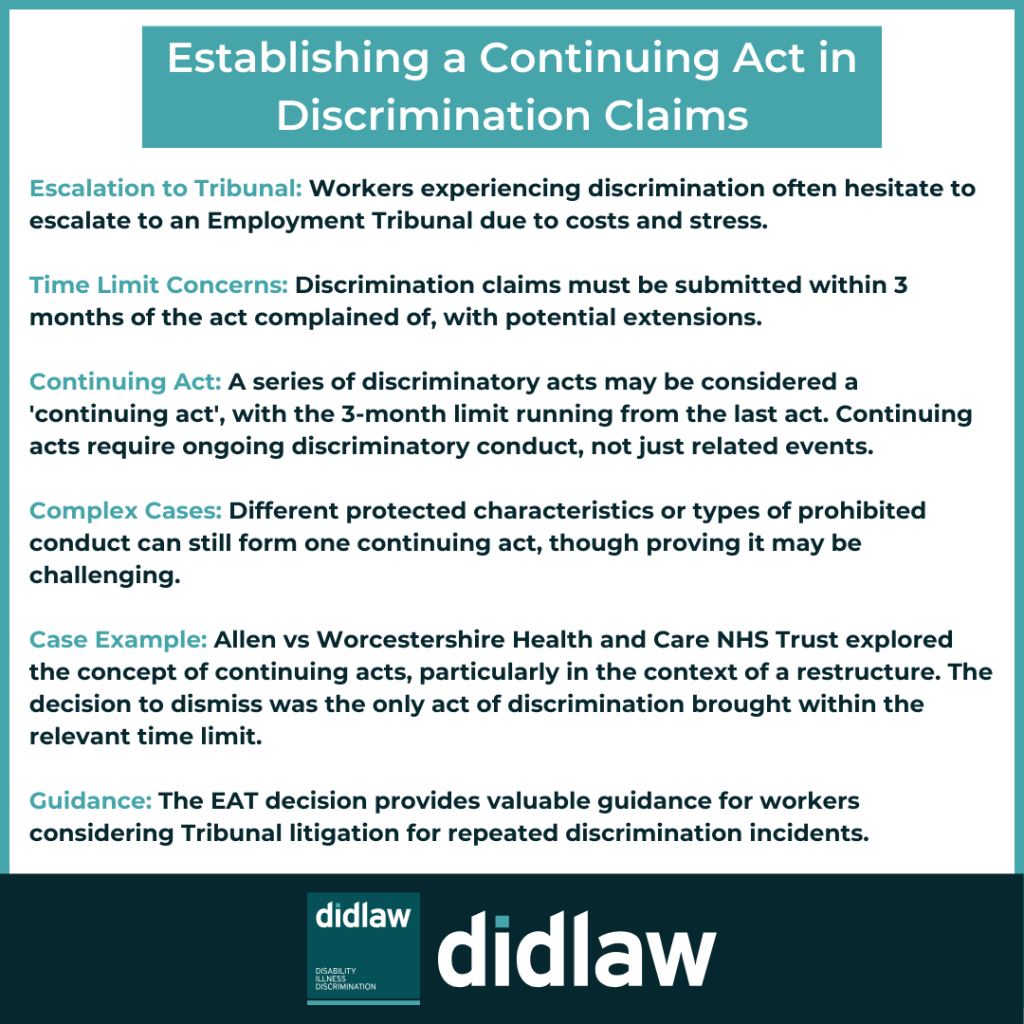
Where a worker feels they have been subjected to discrimination in the workplace, escalation to an Employment Tribunal should be a last resort. Workers will generally try to avoid the costs and stress that Tribunal litigation brings. As a result, many workers will often have suffered from repeated acts of discrimination before they make the decision to proceed to Tribunal litigation.
The danger that arises from this is that a worker may be out of time to include the earlier acts of discrimination in their Tribunal claim. Discrimination claims must generally be submitted to the Employment Tribunal within 3 months of the act complained of, with the applicable extension for conciliation under Acas.
Where repeated discrimination can be classified as a ‘continuing act’, then the 3 month time limit will run from the last act of discrimination in that series. If the last act of discrimination in the continuing act is within the time limit, all acts of discrimination in the series are counted as being within time.
The issue of when a series of discriminatory acts amounts to one continuing act is frequently the subject of case law. Most recently, the Employment Appeal Tribunal considered this issue in the case of Allen v Worcestershire Health and Care NHS Trust.
In this case the employer was going through a restructure and offered the Claimant a lower paid role in the new structure. The Claimant rejected the role and went on sick leave. She was eventually considered for ill-health retirement then dismissed. The Claimant brought claims for unfair dismissal, as well as discrimination because of age and disability.
The Employment Tribunal upheld allegations of discrimination, including relating to the handling of a grievance she had submitted and considering her for ill-health retirement. The Tribunal held that these acts of discrimination constituted a continuing act, because they all related to the restructure.
The Employment Appeal Tribunal (‘EAT’) disagreed. The EAT held that the act of dismissal was the only act of discrimination that was brought within the relevant time limit. The EAT stated that, for there to have been a continuing act there had to have been continuing discriminatory conduct. It was therefore not sufficient that the acts were related in their factual context (the restructure), or that later events would not have occurred without the earlier events. The EAT noted that the decision to dismiss the Claimant was unrelated to the decision to tick the ill-health retirement box in the Claimant’s medical referral.
The EAT did state that a series of discriminatory acts that relate to different protected characteristics can still form one continuing act. The EAT also stated that different types of prohibited conduct can form one continuing act, for example a mixture of harassment and direct discrimination. Relying on a mixture of different protected characteristics and types of prohibited conduct can make it more difficult to prove that repeated discrimination constitutes one continuing act, however it can still be possible depending on the case.
The decision by the EAT serves as useful guidance to workers who are subjected to repeated and interrelated incidents of discrimination, and who are considering Tribunal litigation.
This blog was written by Yavnik Ganguly, Solicitor at didlaw.
